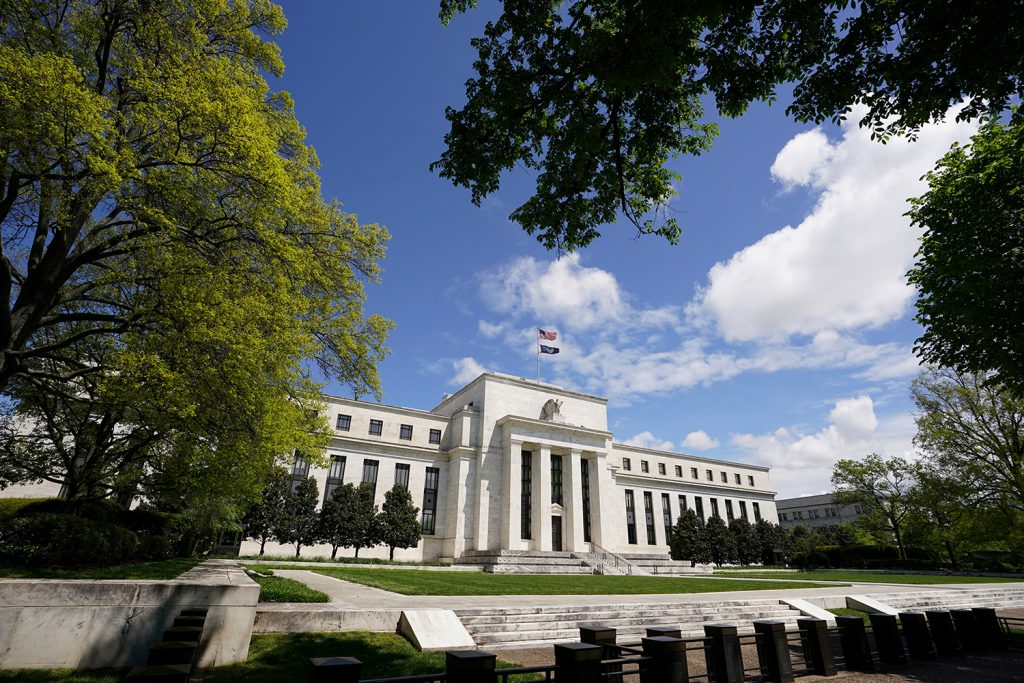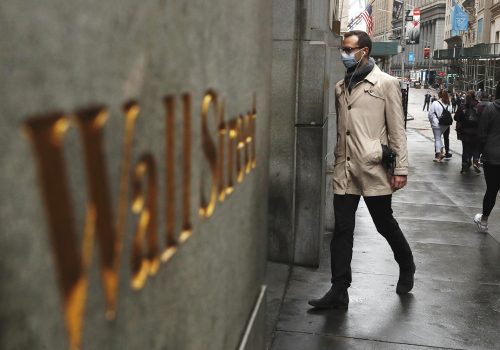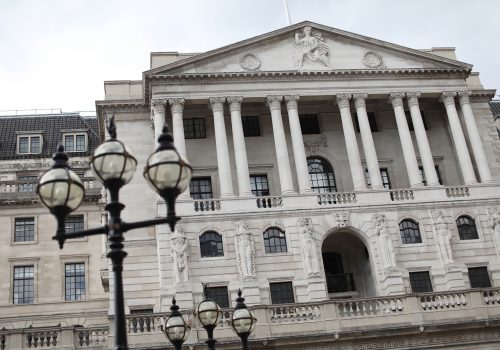Since the start of the pandemic, governments have been employing measures to curb financial and economic crises. Hung Tran, nonresident senior fellow at the Atlantic Council, discusses the problems that will come after these government interventions—inefficiencies, imbalances, and vulnerabilities—which are posing a serious risk to global financial stability. The first piece in the series is available here.
Massive fiscal and monetary support measures by governments have mitigated the pandemic-induced economic and financial crises. However, those measures have exacerbated known areas of weakness and vulnerabilities that have made the economy fragile. The first post in this series highlighted four areas of imbalances and vulnerabilities that pose economic and financial risks in the future; but there are four more to consider.
In addition to the aforementioned four areas of economic imbalance and vulnerability facing the economy post-COVID-19, the fifth area of weakness is that low interest rates have allowed unproductive and unprofitable companies to stay in business by being able to refinance old debt and borrow new debt—by offering a bit more yield than high-grade corporate borrowers. Consequently, zombie companies—whose operating income is insufficient to pay interest expenses—have grown in number over time. A recent study found that the share of zombie companies among listed companies in fourteen advanced countries increased from 4 percent in the late 1980s to 15 percent in 2017. This finding has been corroborated by more comprehensive studies, for example by Nikkei Asian Review which examined 26,000 listed companies in the United States, Europe, and Asia, including Japan, China, and India. The study estimates the worldwide share of zombie companies at 20 percent in 2018; rising from a share of 14 percent of 18,000 listed companies in 2008. As they are less productive and profitable than healthy companies, a growing number of zombie companies drags down the productivity and performance of the corporate sector. In other words, more zombies lead to a mediocre economy—an unintended consequence of the low-for-long monetary policy.
Sixth, low interest rates, including negative policy rates in the Euro Area and a few other countries, have contributed to depressing the profitability of European banks after the Great Financial Crisis (GFC). Since the GFC, European banks on average have posted a return on equity of 2 percent and price to book ratio of 0.5x, compared with 8 percent and 0.8-1x for US banks—reflecting the fact that European banks are much less profitable, and thus valued less, by markets than US banks. While both banking systems have a similar split between interest income (60 percent) and non-interest income (40 percent), European banks have performed consistently worse on several key metrics, which in turn keep their earnings comparatively low. Post-GFC, their net interest margin has been 1.2 percent, in comparison to 1.7 percent among their US competitors—likely due to the competitive pressure from too many banks operating in Europe. Their annual loan growth has been negative (-4.8 percent) against +11.3 percent in the United States—due to relatively weaker economic growth and lower loan demand than in the United States. Finally, their non-performing loan ratio has been higher (4.6 percent) compared with 1.9 percent in the United States—reflecting that there has been slow progress in bad debt workout because of cultural resistance. These trends seem to have become structural in the European banking system, making its banks especially vulnerable to a prolonged low growth and low rates environment, especially with a rising number of zombie companies.
Seventh, low rates have revived investors’ search for yield, helping emerging market sovereigns issue $137 billion in international bonds in the first eight months of 2020. The new borrowing complements the $182.8 billion of loans approved by international financial institutions for developing countries so far this year to help ease their liquidity needs during the pandemic crisis. However, these steps will add to the $8.4 trillion foreign currency debt burden of emerging market and developing countries (EMDCs).
Meanwhile, the Group of Twenty (G20) Debt Services Suspension Initiative (DSSI) has produced limited results. So far, forty-three countries (out of seventy-three eligible) have applied for debt services relief from official bilateral creditors and have received $5.3 billion of relief (which will be capitalized into future debt); this is less than half the potential amount of debt service relief available this year from this creditor group. Of this potential amount, Paris Club creditors are owed $2.6 billion of debt services this year. The other creditors, however, are owed $8.9 billion, of which China is owed the lion’s share of $7.2 billion. Official multilateral institutions (owed $9.7 billion in debt services) and private creditors and bondholders (owed $10.2 billion) have been conspicuous by their absence in the exercise due to various reasons—significantly diminishing the potential benefit of the whole initiative. Beyond 2020, the DSSI-eligible countries face annual debt services payments of about $40 billion a year well into the future.
In short, the plight of the debt-laden EMDCs has been dealt with by giving them more debt, not debt forgiveness; this will increase their debt and debt services burden, strengthen the headwind against their recovery, and set them up for a bigger debt crisis in the future.
Finally, global liquidity denominated in US dollars (USD) has continued to grow, raising the vulnerability of the financial system. Specifically, USD bond and bank credit extended to non-US residents has grown at an annual rate of 7 percent in the first quarter of 2020, reaching an outstanding amount of $12.6 trillion. USD global liquidity had grown at double-digit rates for several years prior to the 2008 financial crisis, collapsing afterwards to a low growth rate of 3 percent in late 2018, and has started to accelerate again. More importantly, global liquidity denominated in the euro—euro credit extended to nonresidents—has slowed to below the growth rate of USD liquidity after increasing well above that rate for many years. Yen-denominated global liquidity has begun to shrink, falling from already slow growth rates. In other words, non-US residents have continued to borrow USD funds, and more so than recently, at the expense of the euro and the yen. Reliance on the Fed as a quasi-lender of last resort (through its temporary currency swap lines offered in 2008 and earlier this year) is even more critical and uncertain than before, given the increasingly polarized and contentious world. This also makes any attempts to move to an internationally cooperative arrangement more difficult to achieve.
Generally speaking, low rates for long and huge central bank balance sheets have become the new normal for economies and financial markets to function—an unhealthy state of affairs suggesting deep-seated structural and microeconomic problems which have not been very responsive to monetary policy measures. At the same time, economic and financial weaknesses such as inefficiencies, imbalances, and vulnerabilities—which have been identified but not addressed—continue to build up, increasing the probability of the next financial crisis and making its impact potentially more severe.
Hung Tran is a nonresident senior fellow at the Atlantic Council; former Executive Managing Director at the Institute of International Finance and former Deputy Director at the International Monetary Fund.
Further reading:
Image: The Federal Reserve building is set against a blue sky, amid the coronavirus disease (COVID-19) outbreak, in Washington, U.S., May 1, 2020. REUTERS/Kevin Lamarque



